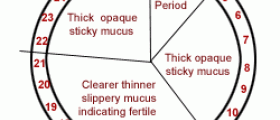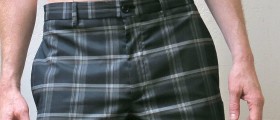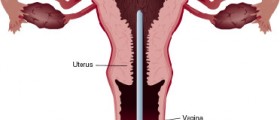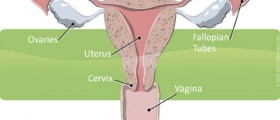hi im 22 non virgin and i found it tonight but mine is bigger then a grape more like half a small apple im booking a doctors apointment tomoro but now i cant sleep cuz im worried. i want to start planning for a kid with my partner but am scared i wnt get that chance : (
to all u virgins gd luck and stay safe and only do it with the right man xx
to the gal whos waiting to her wedding night thats amazing well done and congrats xx
from B
Loading...
Loading...
Maybe it's the cervix. I read the other comments because I noticed the same thing. I'm 17. I mean I'm no expert but this sounds like what I did. the description of the cervix fit so um...awkward bye!
***this post is edited by moderator *** *** web addresses not allowed*** Please read our Terms of Use
Loading...
Loading...
GIRLS RELAX!!!
Every woman has that, it's your cervix!! If you still feel worried, look some pictures up on google and you'll find it looks exactly how it feels, and it SHOULD be there :)))
Loading...
I just felt them in my wife (im a nurse) this is not genital warts. Im not sure what it is, its either related to the anus or the area between the anus and the virginal tissue/wall. im going to have my wife checked out this week. There is a possibility it is simply lymphatic tissue, but im very concerned.
Loading...
your cervix is located toward your abdomen, this is located between the anus and vaginal wall. Also someone thought this might be her G spot. Again no, that is located toward your pubic area just behind the pelvic bone. No where near this tissue being felt. it is odd to me that several of you fell it, as I have never felt it before in a women.
Loading...
LOG INHow to Feel Your Cervix
Did you know the cervix changes position and texture depending on where you are in your ovulation cycle? Feeling your cervix can help you determine whether or not you are ovulating, and it's a great way to better understand your reproductive system. There's no special equipment needed to feel your cervix. See step one for guidance.
AdStepsTips and WarningsFinding Your Cervix1Know where your cervix is located. The cervix is the lowermost part of the uterus, where it connects with the vaginal wall.[1] It is located 3 to 6 inches inside the vagina, at the end of the vaginal tunnel. It is shaped like a small donut with a tiny hole in the center. The position and texture of the cervix change throughout the ovulation cycle.The inner canal of the cervix contains glands that secrete vaginal mucus. The color and texture of the mucus also change throughout the cycle.[2]2Wash your hands with soap and warm water. Since you'll be using your fingers to feel your service, it's important to wash your hands thoroughly to prevent transmitting bacteria to your reproductive system. Avoid using lotion or hand cream before feeling your cervix, since the ingredients in these products can lead to vaginal infections.If you have long nails, you might consider giving them a trim before feeling your cervix. A long, sharp nail could scratch your vagina.3Get in a comfortable position. Most women find that a sitting position (rather than standing or lying down) allows for easy access to the cervix with a minimum of discomfort. Sit on the edge of your bed or bathtub with your knees apart.4Insert your longest finger into your vagina. Gently move your finger into your vaginal opening and let it glide into your vagina. Depending on where you are in your ovulation cycle, your finger may reach several inches into your vagina before you feel your cervix.If you wish, you may lubricate your finger with a water-based lubricant to help it glide in more easily. Do not use petroleum jelly, lotion, or any other product not specifically labeled for use in the vagina.5Feel for the cervix. The tip of your finger will touch the donut-shaped opening at the end of your vagina. You'll know it's your cervix if your finger isn't able to keep reaching further. The cervix may be soft, like pursed lips, or firm, like the tip of your nose, depending on whether or not you are ovulating.Knowing the Signs of Ovulation1Determine whether your cervix is low or high. If your cervix is "low," meaning just a few inches from your vaginal opening, that means you probably aren't ovulating. If it's "high," located deep within the vagina, you may be ovulating.The first few times you feel your cervix, it will be difficult to determine whether it's high or low. Keep feeling every day over the course of a month or two, noting the differences in the position of your cervix from week to week. Eventually you'll be able to tell whether your cervix is low or high.2Determine whether your cervix is firm or soft. If your cervix is firm and tight, you probably aren't ovulating. If it's soft and has some give, you may be ovulating.The texture of the cervix during ovulation has been described as feeling like a pair of lips. During other periods, before and after ovulation, it's more like the tip of your nose - slightly hard with less give.[3]3Determine whether your cervix is wet. During ovulation, the cervix will feel very wet with fluids, and you'll likely have an increased amount of vaginal discharge. After ovulation, the cervix will feel drier until menstruation occurs.4Use other methods to verify whether you're ovulating. In addition to feeling your cervix,monitoring your cervical fluids and recording your basal temperature can help you figure out when you're ovulating. This combination of tracking methods is called Fertility Awareness, and done correctly, it's an effective way to determine when you are fertile.Just before and during ovulation, your vaginal fluid will become heavy and slippery.When ovulation occurs, your basal temperature will rise slightly. It's necessary to take your temperature using a basal thermometer every morning so that you catch the rise in temperature.[4]AdWarningsSources and CitationsArticle InfoDASHBOARDHELP USFULL SITE RANDOM EDITLOG INHow to Feel Your Cervix
Did you know the cervix changes position and texture depending on where you are in your ovulation cycle? Feeling your cervix can help you determine whether or not you are ovulating, and it's a great way to better understand your reproductive system. There's no special equipment needed to feel your cervix. See step one for guidance.
AdStepsTips and WarningsFinding Your Cervix1Know where your cervix is located. The cervix is the lowermost part of the uterus, where it connects with the vaginal wall.[1] It is located 3 to 6 inches inside the vagina, at the end of the vaginal tunnel. It is shaped like a small donut with a tiny hole in the center. The position and texture of the cervix change throughout the ovulation cycle.The inner canal of the cervix contains glands that secrete vaginal mucus. The color and texture of the mucus also change throughout the cycle.[2]2Wash your hands with soap and warm water. Since you'll be using your fingers to feel your service, it's important to wash your hands thoroughly to prevent transmitting bacteria to your reproductive system. Avoid using lotion or hand cream before feeling your cervix, since the ingredients in these products can lead to vaginal infections.If you have long nails, you might consider giving them a trim before feeling your cervix. A long, sharp nail could scratch your vagina.3Get in a comfortable position. Most women find that a sitting position (rather than standing or lying down) allows for easy access to the cervix with a minimum of discomfort. Sit on the edge of your bed or bathtub with your knees apart.4Insert your longest finger into your vagina. Gently move your finger into your vaginal opening and let it glide into your vagina. Depending on where you are in your ovulation cycle, your finger may reach several inches into your vagina before you feel your cervix.If you wish, you may lubricate your finger with a water-based lubricant to help it glide in more easily. Do not use petroleum jelly, lotion, or any other product not specifically labeled for use in the vagina.5Feel for the cervix. The tip of your finger will touch the donut-shaped opening at the end of your vagina. You'll know it's your cervix if your finger isn't able to keep reaching further. The cervix may be soft, like pursed lips, or firm, like the tip of your nose, depending on whether or not you are ovulating.Knowing the Signs of Ovulation1Determine whether your cervix is low or high. If your cervix is "low," meaning just a few inches from your vaginal opening, that means you probably aren't ovulating. If it's "high," located deep within the vagina, you may be ovulating.The first few times you feel your cervix, it will be difficult to determine whether it's high or low. Keep feeling every day over the course of a month or two, noting the differences in the position of your cervix from week to week. Eventually you'll be able to tell whether your cervix is low or high.2Determine whether your cervix is firm or soft. If your cervix is firm and tight, you probably aren't ovulating. If it's soft and has some give, you may be ovulating.The texture of the cervix during ovulation has been described as feeling like a pair of lips. During other periods, before and after ovulation, it's more like the tip of your nose - slightly hard with less give.[3]3Determine whether your cervix is wet. During ovulation, the cervix will feel very wet with fluids, and you'll likely have an increased amount of vaginal discharge. After ovulation, the cervix will feel drier until menstruation occurs.4Use other methods to verify whether you're ovulating. In addition to feeling your cervix,monitoring your cervical fluids and recording your basal temperature can help you figure out when you're ovulating. This combination of tracking methods is called Fertility Awareness, and done correctly, it's an effective way to determine when you are fertile.Just before and during ovulation, your vaginal fluid will become heavy and slippery.When ovulation occurs, your basal temperature will rise slightly. It's necessary to take your temperature using a basal thermometer every morning so that you catch the rise in temperature.[4]AdWarningsSources and CitationsArticle InfoDASHBOARDHELP USFULL SITE RANDOM EDITLOG INHow to Feel Your Cervix
Did you know the cervix changes position and texture depending on where you are in your ovulation cycle? Feeling your cervix can help you determine whether or not you are ovulating, and it's a great way to better understand your reproductive system. There's no special equipment needed to feel your cervix. See step one for guidance.
AdStepsTips and WarningsFinding Your Cervix1Know where your cervix is located. The cervix is the lowermost part of the uterus, where it connects with the vaginal wall.[1] It is located 3 to 6 inches inside the vagina, at the end of the vaginal tunnel. It is shaped like a small donut with a tiny hole in the center. The position and texture of the cervix change throughout the ovulation cycle.The inner canal of the cervix contains glands that secrete vaginal mucus. The color and texture of the mucus also change throughout the cycle.[2]2Wash your hands with soap and warm water. Since you'll be using your fingers to feel your service, it's important to wash your hands thoroughly to prevent transmitting bacteria to your reproductive system. Avoid using lotion or hand cream before feeling your cervix, since the ingredients in these products can lead to vaginal infections.If you have long nails, you might consider giving them a trim before feeling your cervix. A long, sharp nail could scratch your vagina.3Get in a comfortable position. Most women find that a sitting position (rather than standing or lying down) allows for easy access to the cervix with a minimum of discomfort. Sit on the edge of your bed or bathtub with your knees apart.4Insert your longest finger into your vagina. Gently move your finger into your vaginal opening and let it glide into your vagina. Depending on where you are in your ovulation cycle, your finger may reach several inches into your vagina before you feel your cervix.If you wish, you may lubricate your finger with a water-based lubricant to help it glide in more easily. Do not use petroleum jelly, lotion, or any other product not specifically labeled for use in the vagina.5Feel for the cervix. The tip of your finger will touch the donut-shaped opening at the end of your vagina. You'll know it's your cervix if your finger isn't able to keep reaching further. The cervix may be soft, like pursed lips, or firm, like the tip of your nose, depending on whether or not you are ovulating.Knowing the Signs of Ovulation1Determine whether your cervix is low or high. If your cervix is "low," meaning just a few inches from your vaginal opening, that means you probably aren't ovulating. If it's "high," located deep within the vagina, you may be ovulating.The first few times you feel your cervix, it will be difficult to determine whether it's high or low. Keep feeling every day over the course of a month or two, noting the differences in the position of your cervix from week to week. Eventually you'll be able to tell whether your cervix is low or high.2Determine whether your cervix is firm or soft. If your cervix is firm and tight, you probably aren't ovulating. If it's soft and has some give, you may be ovulating.The texture of the cervix during ovulation has been described as feeling like a pair of lips. During other periods, before and after ovulation, it's more like the tip of your nose - slightly hard with less give.[3]3Determine whether your cervix is wet. During ovulation, the cervix will feel very wet with fluids, and you'll likely have an increased amount of vaginal discharge. After ovulation, the cervix will feel drier until menstruation occurs.4Use other methods to verify whether you're ovulating. In addition to feeling your cervix,monitoring your cervical fluids and recording your basal temperature can help you figure out when you're ovulating. This combination of tracking methods is called Fertility Awareness, and done correctly, it's an effective way to determine when you are fertile.Just before and during ovulation, your vaginal fluid will become heavy and slippery.When ovulation occurs, your basal temperature will rise slightly. It's necessary to take your temperature using a basal thermometer every morning so that you catch the rise in temperature.[4]AdWarningsSources and CitationsArticle InfoDASHBOARDHELP USFULL SITE RANDOM EDITLOG INHow to Feel Your Cervix
Did you know the cervix changes position and texture depending on where you are in your ovulation cycle? Feeling your cervix can help you determine whether or not you are ovulating, and it's a great way to better understand your reproductive system. There's no special equipment needed to feel your cervix. See step one for guidance.
AdStepsTips and WarningsFinding Your Cervix1Know where your cervix is located. The cervix is the lowermost part of the uterus, where it connects with the vaginal wall.[1] It is located 3 to 6 inches inside the vagina, at the end of the vaginal tunnel. It is shaped like a small donut with a tiny hole in the center. The position and texture of the cervix change throughout the ovulation cycle.The inner canal of the cervix contains glands that secrete vaginal mucus. The color and texture of the mucus also change throughout the cycle.[2]2Wash your hands with soap and warm water. Since you'll be using your fingers to feel your service, it's important to wash your hands thoroughly to prevent transmitting bacteria to your reproductive system. Avoid using lotion or hand cream before feeling your cervix, since the ingredients in these products can lead to vaginal infections.If you have long nails, you might consider giving them a trim before feeling your cervix. A long, sharp nail could scratch your vagina.3Get in a comfortable position. Most women find that a sitting position (rather than standing or lying down) allows for easy access to the cervix with a minimum of discomfort. Sit on the edge of your bed or bathtub with your knees apart.4Insert your longest finger into your vagina. Gently move your finger into your vaginal opening and let it glide into your vagina. Depending on where you are in your ovulation cycle, your finger may reach several inches into your vagina before you feel your cervix.If you wish, you may lubricate your finger with a water-based lubricant to help it glide in more easily. Do not use petroleum jelly, lotion, or any other product not specifically labeled for use in the vagina.5Feel for the cervix. The tip of your finger will touch the donut-shaped opening at the end of your vagina. You'll know it's your cervix if your finger isn't able to keep reaching further. The cervix may be soft, like pursed lips, or firm, like the tip of your nose, depending on whether or not you are ovulating.Knowing the Signs of Ovulation1Determine whether your cervix is low or high. If your cervix is "low," meaning just a few inches from your vaginal opening, that means you probably aren't ovulating. If it's "high," located deep within the vagina, you may be ovulating.The first few times you feel your cervix, it will be difficult to determine whether it's high or low. Keep feeling every day over the course of a month or two, noting the differences in the position of your cervix from week to week. Eventually you'll be able to tell whether your cervix is low or high.2Determine whether your cervix is firm or soft. If your cervix is firm and tight, you probably aren't ovulating. If it's soft and has some give, you may be ovulating.The texture of the cervix during ovulation has been described as feeling like a pair of lips. During other periods, before and after ovulation, it's more like the tip of your nose - slightly hard with less give.[3]3Determine whether your cervix is wet. During ovulation, the cervix will feel very wet with fluids, and you'll likely have an increased amount of vaginal discharge. After ovulation, the cervix will feel drier until menstruation occurs.4Use other methods to verify whether you're ovulating. In addition to feeling your cervix,monitoring your cervical fluids and recording your basal temperature can help you figure out when you're ovulating. This combination of tracking methods is called Fertility Awareness, and done correctly, it's an effective way to determine when you are fertile.Just before and during ovulation, your vaginal fluid will become heavy and slippery.When ovulation occurs, your basal temperature will rise slightly. It's necessary to take your temperature using a basal thermometer every morning so that you catch the rise in temperature.[4]AdWarningsSources and CitationsArticle InfoDASHBOARDHELP USFULL SITE RANDOM EDITLOG INHow to Feel Your Cervix
Did you know the cervix changes position and texture depending on where you are in your ovulation cycle? Feeling your cervix can help you determine whether or not you are ovulating, and it's a great way to better understand your reproductive system. There's no special equipment needed to feel your cervix. See step one for guidance.
AdStepsTips and WarningsFinding Your Cervix1Know where your cervix is located. The cervix is the lowermost part of the uterus, where it connects with the vaginal wall.[1] It is located 3 to 6 inches inside the vagina, at the end of the vaginal tunnel. It is shaped like a small donut with a tiny hole in the center. The position and texture of the cervix change throughout the ovulation cycle.The inner canal of the cervix contains glands that secrete vaginal mucus. The color and texture of the mucus also change throughout the cycle.[2]2Wash your hands with soap and warm water. Since you'll be using your fingers to feel your service, it's important to wash your hands thoroughly to prevent transmitting bacteria to your reproductive system. Avoid using lotion or hand cream before feeling your cervix, since the ingredients in these products can lead to vaginal infections.If you have long nails, you might consider giving them a trim before feeling your cervix. A long, sharp nail could scratch your vagina.3Get in a comfortable position. Most women find that a sitting position (rather than standing or lying down) allows for easy access to the cervix with a minimum of discomfort. Sit on the edge of your bed or bathtub with your knees apart.4Insert your longest finger into your vagina. Gently move your finger into your vaginal opening and let it glide into your vagina. Depending on where you are in your ovulation cycle, your finger may reach several inches into your vagina before you feel your cervix.If you wish, you may lubricate your finger with a water-based lubricant to help it glide in more easily. Do not use petroleum jelly, lotion, or any other product not specifically labeled for use in the vagina.5Feel for the cervix. The tip of your finger will touch the donut-shaped opening at the end of your vagina. You'll know it's your cervix if your finger isn't able to keep reaching further. The cervix may be soft, like pursed lips, or firm, like the tip of your nose, depending on whether or not you are ovulating.Knowing the Signs of Ovulation1Determine whether your cervix is low or high. If your cervix is "low," meaning just a few inches from your vaginal opening, that means you probably aren't ovulating. If it's "high," located deep within the vagina, you may be ovulating.The first few times you feel your cervix, it will be difficult to determine whether it's high or low. Keep feeling every day over the course of a month or two, noting the differences in the position of your cervix from week to week. Eventually you'll be able to tell whether your cervix is low or high.2Determine whether your cervix is firm or soft. If your cervix is firm and tight, you probably aren't ovulating. If it's soft and has some give, you may be ovulating.The texture of the cervix during ovulation has been described as feeling like a pair of lips. During other periods, before and after ovulation, it's more like the tip of your nose - slightly hard with less give.[3]3Determine whether your cervix is wet. During ovulation, the cervix will feel very wet with fluids, and you'll likely have an increased amount of vaginal discharge. After ovulation, the cervix will feel drier until menstruation occurs.4Use other methods to verify whether you're ovulating. In addition to feeling your cervix,monitoring your cervical fluids and recording your basal temperature can help you figure out when you're ovulating. This combination of tracking methods is called Fertility Awareness, and done correctly, it's an effective way to determine when you are fertile.Just before and during ovulation, your vaginal fluid will become heavy and slippery.When ovulation occurs, your basal temperature will rise slightly. It's necessary to take your temperature using a basal thermometer every morning so that you catch the rise in temperature.[4]AdWarningsSources and CitationsArticle InfoDASHBOARDHELP USFULL SITE RANDOM EDITLOG INHow to Feel Your Cervix
Did you know the cervix changes position and texture depending on where you are in your ovulation cycle? Feeling your cervix can help you determine whether or not you are ovulating, and it's a great way to better understand your reproductive system. There's no special equipment needed to feel your cervix. See step one for guidance.
AdStepsTips and WarningsFinding Your Cervix1Know where your cervix is located. The cervix is the lowermost part of the uterus, where it connects with the vaginal wall.[1] It is located 3 to 6 inches inside the vagina, at the end of the vaginal tunnel. It is shaped like a small donut with a tiny hole in the center. The position and texture of the cervix change throughout the ovulation cycle.The inner canal of the cervix contains glands that secrete vaginal mucus. The color and texture of the mucus also change throughout the cycle.[2]2Wash your hands with soap and warm water. Since you'll be using your fingers to feel your service, it's important to wash your hands thoroughly to prevent transmitting bacteria to your reproductive system. Avoid using lotion or hand cream before feeling your cervix, since the ingredients in these products can lead to vaginal infections.If you have long nails, you might consider giving them a trim before feeling your cervix. A long, sharp nail could scratch your vagina.3Get in a comfortable position. Most women find that a sitting position (rather than standing or lying down) allows for easy access to the cervix with a minimum of discomfort. Sit on the edge of your bed or bathtub with your knees apart.4Insert your longest finger into your vagina. Gently move your finger into your vaginal opening and let it glide into your vagina. Depending on where you are in your ovulation cycle, your finger may reach several inches into your vagina before you feel your cervix.If you wish, you may lubricate your finger with a water-based lubricant to help it glide in more easily. Do not use petroleum jelly, lotion, or any other product not specifically labeled for use in the vagina.5Feel for the cervix. The tip of your finger will touch the donut-shaped opening at the end of your vagina. You'll know it's your cervix if your finger isn't able to keep reaching further. The cervix may be soft, like pursed lips, or firm, like the tip of your nose, depending on whether or not you are ovulating.Knowing the Signs of Ovulation1Determine whether your cervix is low or high. If your cervix is "low," meaning just a few inches from your vaginal opening, that means you probably aren't ovulating. If it's "high," located deep within the vagina, you may be ovulating.The first few times you feel your cervix, it will be difficult to determine whether it's high or low. Keep feeling every day over the course of a month or two, noting the differences in the position of your cervix from week to week. Eventually you'll be able to tell whether your cervix is low or high.2Determine whether your cervix is firm or soft. If your cervix is firm and tight, you probably aren't ovulating. If it's soft and has some give, you may be ovulating.The texture of the cervix during ovulation has been described as feeling like a pair of lips. During other periods, before and after ovulation, it's more like the tip of your nose - slightly hard with less give.[3]3Determine whether your cervix is wet. During ovulation, the cervix will feel very wet with fluids, and you'll likely have an increased amount of vaginal discharge. After ovulation, the cervix will feel drier until menstruation occurs.4Use other methods to verify whether you're ovulating. In addition to feeling your cervix,monitoring your cervical fluids and recording your basal temperature can help you figure out when you're ovulating. This combination of tracking methods is called Fertility Awareness, and done correctly, it's an effective way to determine when you are fertile.Just before and during ovulation, your vaginal fluid will become heavy and slippery.When ovulation occurs, your basal temperature will rise slightly. It's necessary to take your temperature using a basal thermometer every morning so that you catch the rise in temperature.[4]AdWarningsSources and CitationsArticle InfoDASHBOARDHELP USFULL SITE RANDOM EDIT
Loading...
Loading...
I have the same problem,except instead of one lump,I have at least three or four and they are hard but you can knock them about,I have never been sexually active so I'm not exactly sure. I looked at my vagina in a mirror and you could see the largest lump and all the others just outlined in the background. I am really worried so please help! Thanks
